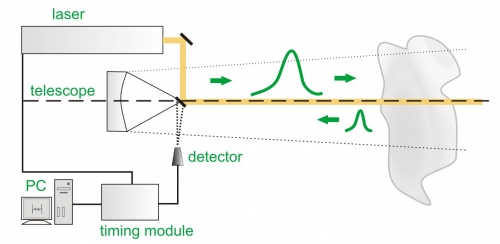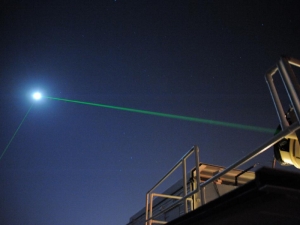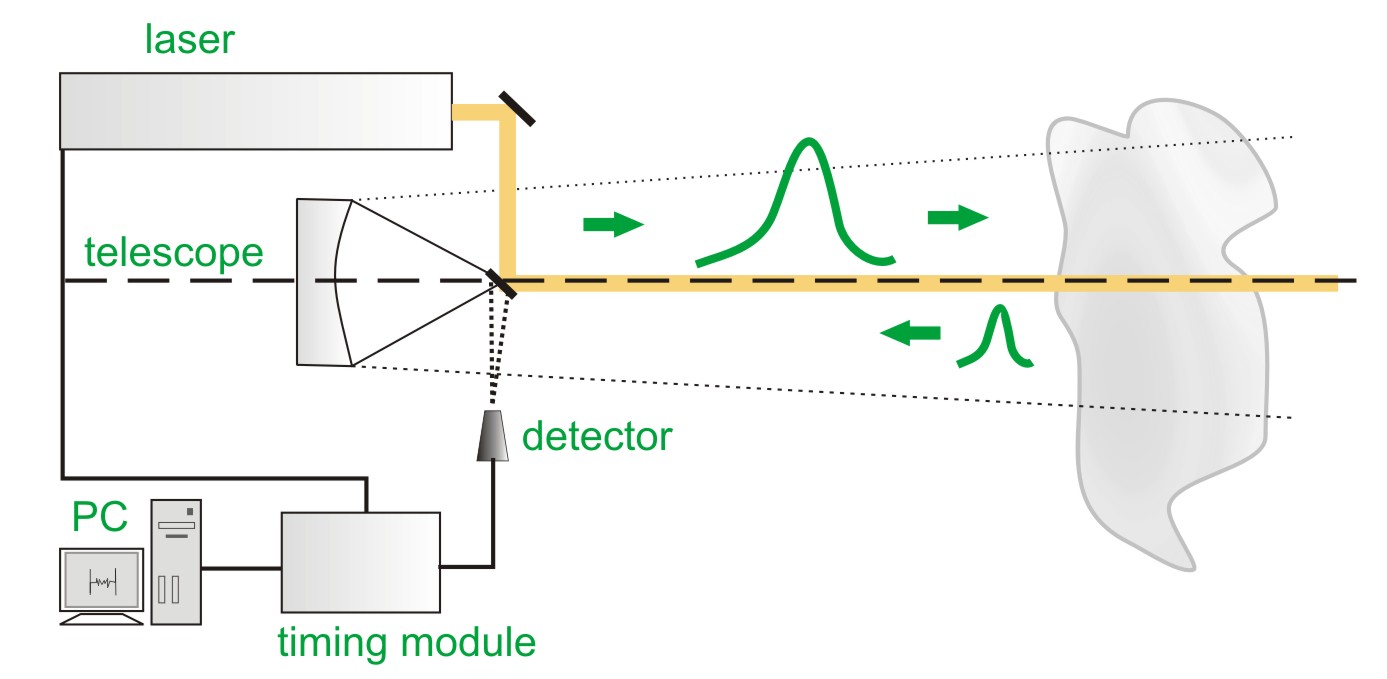 A LIDAR or ranging set-up essentially consists of four core components: the pulsed laser, suited optics to collect the back scattered photons, a single photon sensitive detector and timing electronics with a suited temporal resolution. The depth resolution that can be achieved with such a set-up depends on several factors, including the instrumental timing response of the detector, the laser and the temporal resolution of the timing electronics. Basically, a laser pulse is sent out of a transmitter and the photons are scattered back and are collected with e.g. a telescope and counted as a function of time in relation to the laser pulse. Using the speed of light it is then possible to calculate how far the photons have travelled round trip. Photons can be scattered back off of many different things, such as other particles (aerosols or molecules) in the atmosphere or cars (police laser radar) for instance. There are also many different ways to use the signal that is collected by the telescope. Some of these uses include: detecting aerosols (pollution, dust, trace gas concentrations, etc.) in the atmosphere, detecting water vapor content in the atmosphere, measuring pressure, temperature or winds as well as many other applications.
A LIDAR or ranging set-up essentially consists of four core components: the pulsed laser, suited optics to collect the back scattered photons, a single photon sensitive detector and timing electronics with a suited temporal resolution. The depth resolution that can be achieved with such a set-up depends on several factors, including the instrumental timing response of the detector, the laser and the temporal resolution of the timing electronics. Basically, a laser pulse is sent out of a transmitter and the photons are scattered back and are collected with e.g. a telescope and counted as a function of time in relation to the laser pulse. Using the speed of light it is then possible to calculate how far the photons have travelled round trip. Photons can be scattered back off of many different things, such as other particles (aerosols or molecules) in the atmosphere or cars (police laser radar) for instance. There are also many different ways to use the signal that is collected by the telescope. Some of these uses include: detecting aerosols (pollution, dust, trace gas concentrations, etc.) in the atmosphere, detecting water vapor content in the atmosphere, measuring pressure, temperature or winds as well as many other applications.
A SLR set-up is very similar to a LIDAR or ranging setup with the notable exception that the laser pulse is scattered back from satellites equipped with retroreflectors instead of diffuse targets such as aerosols or molecules. SLR set-ups are also mostly connected to a common external timing reference that is needed to synchronize the results from individual SLR stations, which are usually located in different parts of the world. This feature is readily supported by the HydraHarp 400.
 The following core components are needed to build a system capable of LIDAR or ranging measurements, which are (partly) available from PicoQuant:
The following core components are needed to build a system capable of LIDAR or ranging measurements, which are (partly) available from PicoQuant:
- Laser drivers
- Laser heads
- Photon counting detectors
- Data acqusition units such as TCSPC electronics
- Collection optics
Latest 10 publications related to LIDAR or ranging
The following list is an extract of 10 recent publications from our bibliography that either bear reference or are releated to this application and our products in some way. Do you miss your publication? If yes, we will be happy to include it in our bibliography. Please send an e-mail to info@picoquant.com containing the appropriate citation. Thank you very much in advance for your kind co-operation.



 Contact us
Contact us

